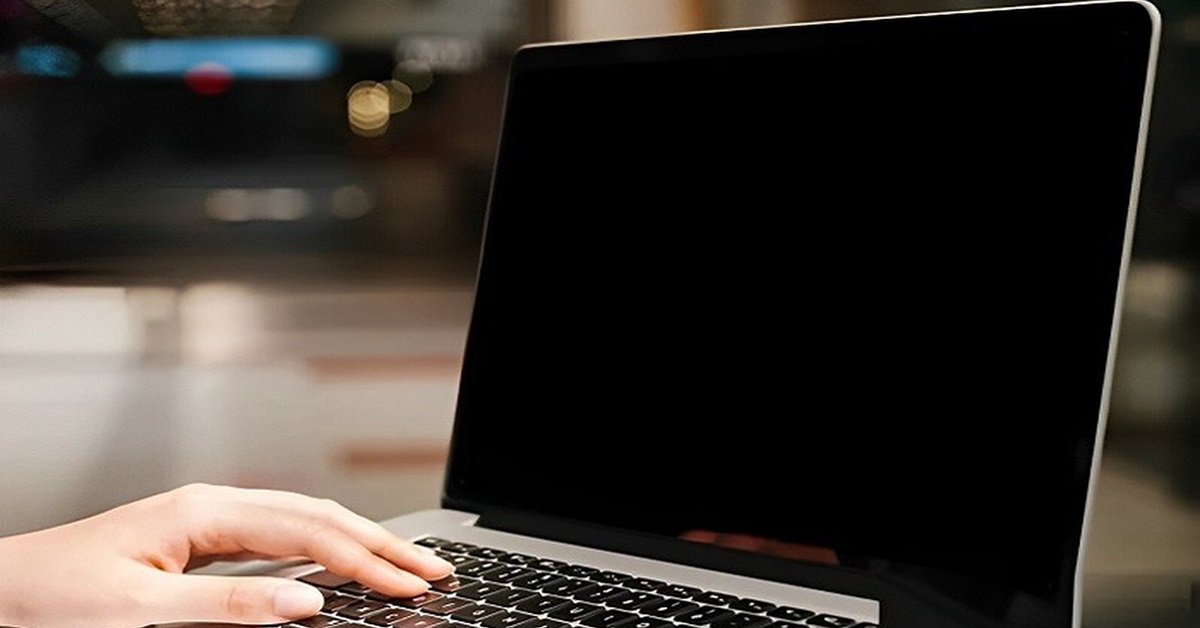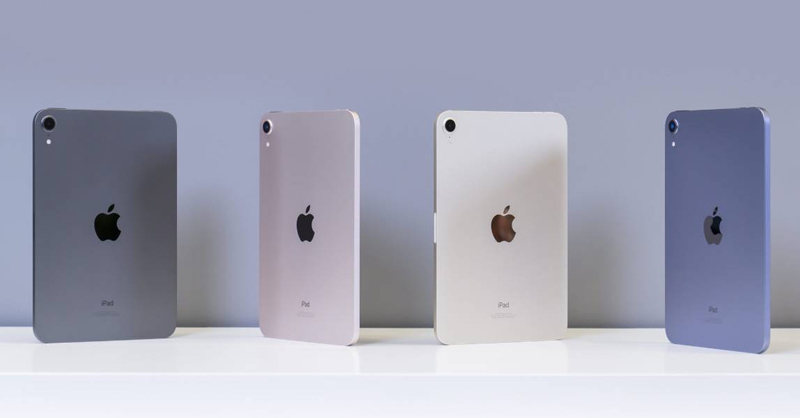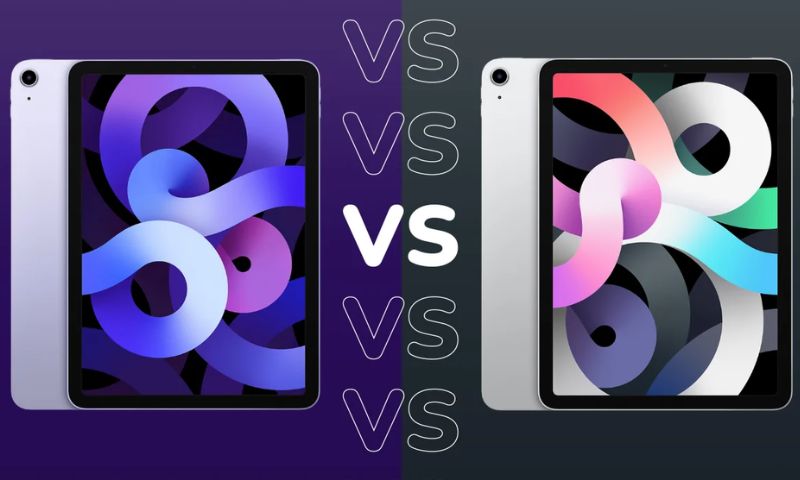When your laptop suddenly doesn’t display the screen, don’t worry too much! This is a common condition and can stem from many different causes. In this article, Hoang Ha Mobile will help you learn the common reasons why your laptop won’t turn on and provide 9 simple, easy-to-implement fixes, thereby helping you quickly get your laptop back to normal operation. often.
What is the problem of a laptop not turning on?
Laptop screen not working is a fairly common situation that many users encounter. When encountering this problem, you may find that the device cannot boot even if you press the power button, the screen remains black, not displaying any content. Sometimes the power light or keyboard LED stays on, and the fan or hard drive may work, but the screen remains unresponsive.
Bạn đang xem: Laptop không lên màn hình – Nguyên nhân và 9 cách khắc phục đơn giản

The cause of this condition can come from many different factors. One of the common causes is that the battery is damaged or exhausted, causing the laptop to not receive enough power to start. In addition, faulty RAM, loose connections of components inside the device, or problems with the graphics card can also be the cause. Sometimes, the laptop screen does not display because the operating system has a problem, the driver is incompatible, or there is a software error during the boot process.
In some cases, if the problem comes from hardware or more serious software errors, you should bring your laptop to a warranty center or a professional technician for a thorough inspection and repair.
Reasons why laptop won’t turn on and how to fix it
The reason your laptop won’t turn on can come from many different factors, including hardware and software. Here are the most common causes and fixes:
There is a problem with the battery or power source
A problem with the battery or power source is one of the common reasons why a laptop cannot start. This can stem from many different factors. First, the laptop battery may be exhausted or damaged due to long-term use without being replaced. This results in the laptop not receiving enough power to boot.

In addition, the charging cable or charger may be damaged, the wire is broken, or the connection port is loose, causing the laptop to not receive power from an external source, thereby leading to a situation where the laptop will not turn on. Another factor is that the power outlet or voltage adapter has a problem, not providing enough power for the laptop to operate.
How to fix:
- First, make sure that the charging cable and charger are not damaged. If possible, you should try using a different charger that is compatible with your laptop to see if the problem is with the charger.
- If the laptop battery is completely drained or has problems, remove the battery and try starting the laptop by connecting it directly to the power source.
- Carefully check the charging port on the laptop and the power outlet to ensure there is no looseness or damage. If there is a problem with the outlet or charging port, you should have it repaired or replaced.
- If the battery is too old or damaged, you should replace it with a new one to ensure the laptop operates stably.
RAM error or loose connection
Faulty RAM or loose connections are a common reason why a laptop cannot boot, the screen is completely black, or the device emits a warning beep. RAM (Random Access Memory) is temporary memory that helps the computer handle tasks quickly. If the RAM is faulty or not securely connected to the motherboard, the laptop will not be able to boot and display any information, leading to the laptop not turning on.

The cause may come from RAM being damaged due to long-term use, exposure to high temperatures or physical impact. Loose connections can occur when the computer is subjected to a strong impact, or simply because the RAM was not installed correctly from the beginning.
How to fix:
- Before interfering with the hardware, turn off the device and disconnect it from the power source to avoid causing damage.
- Use a screwdriver to open the back cover of the laptop, which contains the RAM slots. Check to see if RAM is loose.
- If the RAM is loose, remove it and reinsert it securely into the slot. Make sure the RAM prongs are in place.
- If the computer still does not boot after reinstalling the RAM, you can try replacing it with another RAM stick to see if the problem lies in the faulty RAM stick.
The screen is broken, causing the laptop to not turn on
A damaged laptop screen is a common reason why the computer does not display even though the laptop still boots normally. When the screen is broken, you may experience conditions such as a completely black screen, flickering, horizontal/vertical stripes, or a screen that is only partially displayed. This problem often comes from damage to the screen’s hardware, a loose connection cable between the screen and the motherboard, or an error related to the graphics card.

How to fix this problem of laptop not opening:
- Connect the laptop to an external monitor to check if the error is on the laptop screen or not. If the external display is working properly, the problem may lie with the laptop screen.
- If the laptop screen has a loose connection, you can open the computer and check the cable connecting the screen and motherboard.
- If the screen is physically damaged or cannot be repaired, you may consider replacing it with a new one.
- If the problem is related to the graphics card, you should bring your laptop to a warranty center for inspection and repair.
Checking and repairing laptop screens requires specialized techniques and components, so if you can’t fix it yourself, you should contact a professional repair service to avoid causing further damage.
Graphics card error
Faulty graphics cards are a common reason why laptops have problems displaying images. The graphics card (GPU) is responsible for handling tasks related to images, videos, and graphics. When the graphics card has problems, you may experience phenomena such as black screen, freezing, wrong color display, or jerky or flickering images. In some cases, the laptop does not turn on, the laptop still works but cannot output image signals to the screen.

How to fix:
Update or reinstall the graphics card driver: Try updating to the latest driver version from the graphics card manufacturer’s home page. If the problem is still not resolved, you can remove the old driver and reinstall it.
Clean and cool the graphics card: Clean the computer to remove dirt and ensure the cooling system operates effectively. Use new thermal paste for the GPU if necessary.
Check the electrical system: Make sure the power supply to the laptop is stable and not overloaded. If necessary, you can check and replace the power supply.
Replace the graphics card: If the graphics card is seriously damaged or cannot be repaired, replacing it with a new card will be the best solution.
Software or operating system error
Software or operating system errors are one of the common reasons why laptops do not turn on or display properly. Software-related problems can include corrupted operating systems, corrupted system files, conflicts between software, or viruses that disrupt computer operations.

How to fix:
Boot into Safe Mode: Safe Mode is a mode that boots the operating system with minimal services and drivers, helping to determine whether the problem comes from software or not. If you can enter Safe Mode, you can remove conflicting software or fix system errors.
Run operating system repair tools: Windows has tools like “Startup Repair” or “System File Checker” (sfc /scannow) to repair damaged system files.
Reinstall the operating system: If the software error is serious and cannot be fixed with the above methods, reinstalling the operating system may be the final solution to return the laptop to a normal operating state.
The temperature is too high, causing the laptop to not turn on
Excessive temperature is one of the common reasons why a laptop cannot start or automatically shuts down to protect the internal hardware components. When a laptop is operating, especially when running heavy tasks such as gaming, video editing or graphics processing, the device’s temperature will increase. If the cooling system does not work effectively, the temperature can increase beyond a safe level, interrupting the machine’s operation or causing hardware damage.

How to fix:
Clean the radiator fan: Use compressed air to clean the fan and ventilation slots, removing dust and dirt that obstruct airflow.
Use a heatsink: A heatsink with an auxiliary fan helps circulate air better under the laptop, thereby reducing the overall temperature.
Replace thermal paste: If the laptop has been used for a long time, you should replace the thermal paste on the CPU and GPU to increase heat transfer efficiency.
Use the laptop in a cool environment: Avoid using the laptop in high temperature environments or placing the laptop on soft surfaces such as blankets or pillows, because these surfaces impede air flow.
Motherboard error
Xem thêm : Hướng dẫn cách chơi board game Coup cho người mới chơi
The next cause that can lead to a laptop not turning on is a motherboard error. Basically, a motherboard error is one of the most serious problems a laptop can encounter, because the motherboard is the central part that controls and connects all other hardware components such as CPU, RAM, graphics card and hard drive.
When the motherboard is faulty, the laptop may not be able to boot, have no display signal, or operate unstable with symptoms such as automatic shutdown, freezing, or not recognizing peripheral devices.

How to fix:
- Make sure that the power supply to the laptop is stable and use a genuine charger to avoid damage to the motherboard.
- If the motherboard fails due to overheating, cleaning the cooling system and ensuring the laptop operates in a cool environment can help prolong the life of the device.
- For small components on the motherboard such as capacitors or faulty chips, you can bring your laptop to a warranty center or reputable repair facility to be checked and replaced.
- If the motherboard is severely damaged or cannot be repaired, the final solution is to replace the motherboard with a new one.
The screen cable is broken or loose, causing the laptop to not turn on
A broken or loose screen cable is one of the reasons why the laptop does not display or displays incorrectly. The screen cable (also known as flex cable) connects between the motherboard and the laptop screen, helping to transmit image signals. When this cable is broken, loose or damaged, the screen will not receive the signal, leading to a black screen, flashing, or displaying horizontal and vertical stripes.

How to fix:
If you suspect the screen cable is loose, you can bring your laptop to a repair center so a technician can check the connection between the motherboard and screen. In some cases, simply readjusting the connection is enough to restore the image.
If the cable is broken or severely damaged, replacing it with a new one is necessary. This is a complicated process that requires disassembling the screen and components inside the laptop, so you should go to a professional repair center to replace the cable.
To avoid loosening or breaking the cable, open the display gently and avoid folding the display at extreme angles.
Driver or firmware is not compatible
Incompatible drivers or firmware are a common cause of laptops not turning on, which can cause failure to boot, black screens, or performance-related errors. When drivers or firmware are not compatible with the operating system, the hardware may not function properly or cause system conflicts.

How to fix:
Update drivers and firmware: Visit the hardware manufacturer’s official website to download and install the latest driver and firmware versions, ensuring they are compatible with the current operating system version.
Reinstall the driver: If the driver is corrupted or not working properly, you can remove the old driver and reinstall the new driver. In Windows, you can use “Device Manager” to uninstall the driver and restart the computer so that the system automatically reinstalls the driver.
Update the operating system: If the current driver or firmware is not compatible with the old operating system, updating to the latest operating system version may resolve the issue.
Conclusion
The problem of a laptop not turning on can come from many different reasons, from problems with the power source, RAM, graphics card, to software or operating system errors. However, with the 9 simple fixes that Hoang Ha Mobile has provided above, you can easily handle common errors at home.
See more:
Cause of laptop Windows error? 6 Common solutions
5+ ways to fix laptop lost WiFi extremely quickly and effectively
Nguồn: https://tuyengiaothudo.vn
Danh mục: Thủ thuật










